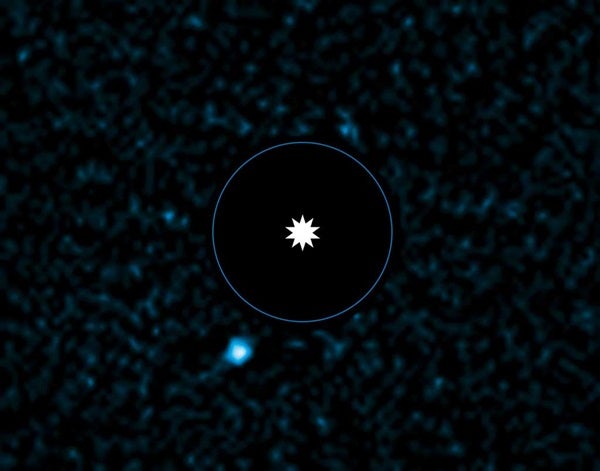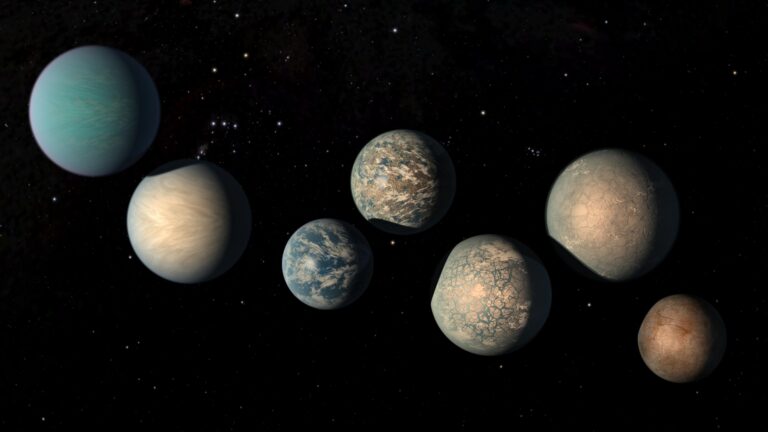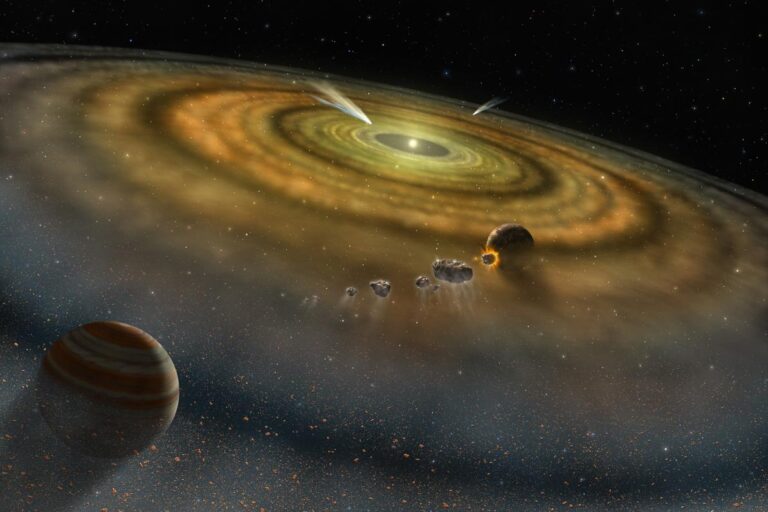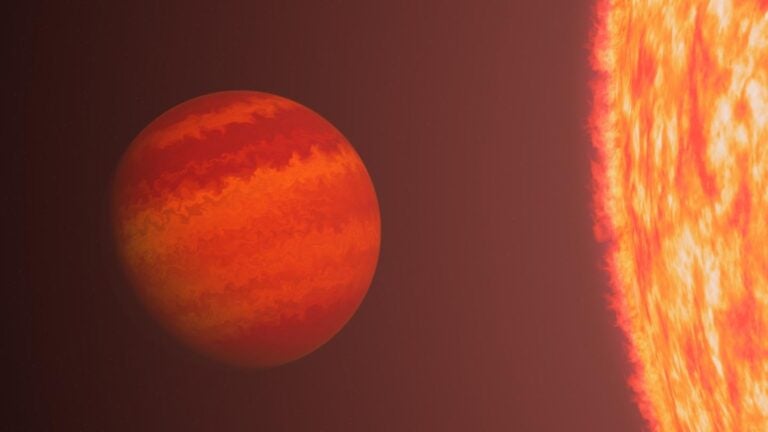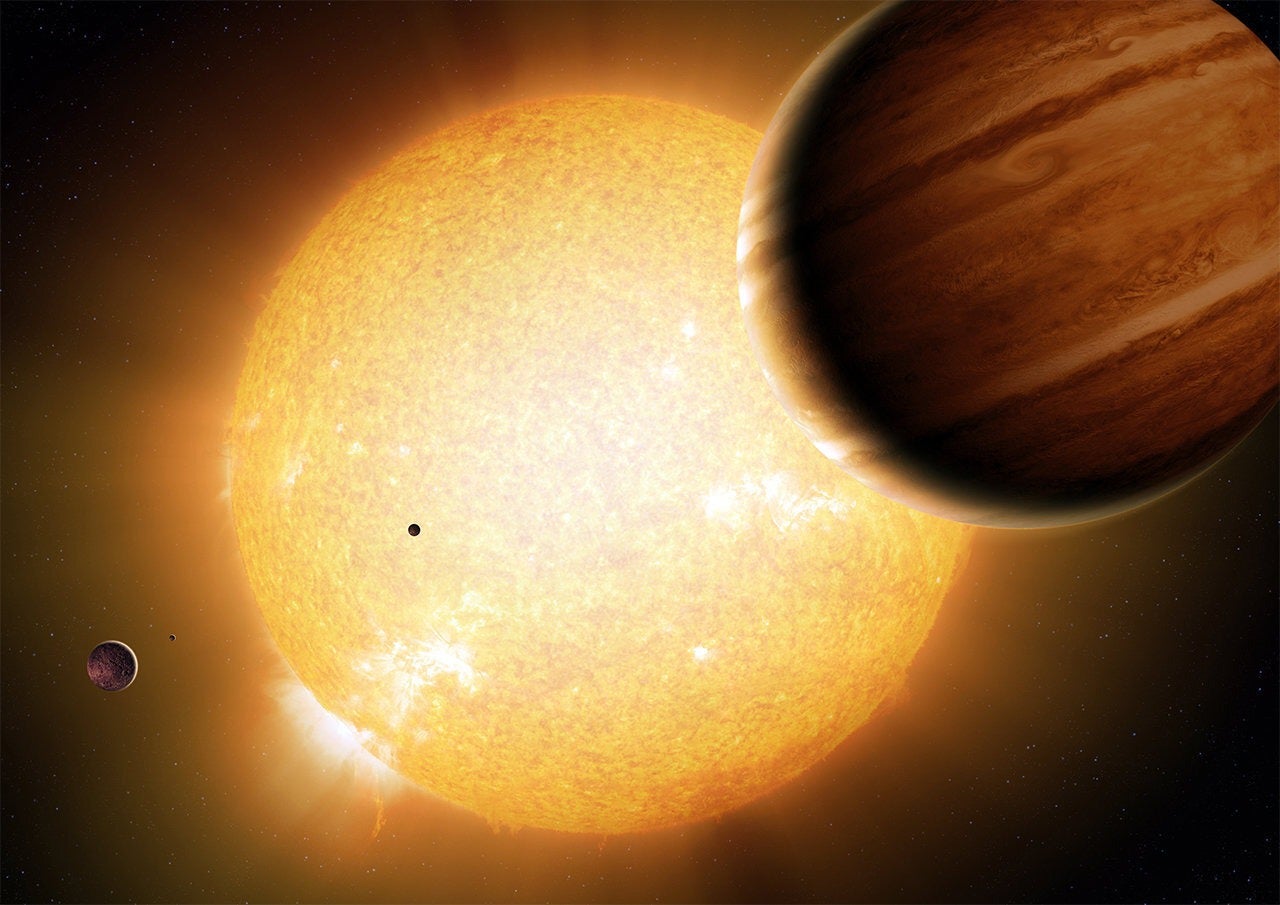Although nearly a thousand exoplanets have been detected indirectly — most using the radial velocity or transit methods — and many more candidates await confirmation, only a dozen exoplanets have been directly imaged. Nine years after ESO’s VLT captured the first image of an exoplanet, the planetary companion to the brown dwarf 2M1207, the same team has caught on camera what is probably the lightest of these objects so far.
“Direct imaging of planets is an extremely challenging technique that requires the most advanced instruments, whether ground-based or in space,” said Julien Rameau from the Institute of Planetology and Astrophysics in Grenoble, France. “Only a few planets have been directly observed so far, making every single discovery an important milestone on the road to understanding giant planets and how they form.”
In the new observations, the likely planet appears as a faint but clear dot close to the star HD 95086. A later observation also showed that it was slowly moving along with the star across the sky. This suggests that the object, which has been designated HD 95086 b, is in orbit around the star. Its brightness also indicates that it has a predicted mass of only four to five times that of Jupiter.
The team used NACO, the adaptive-optics instrument mounted on one of the 8.2-meter unit telescopes of ESO’s VLT. This instrument allows astronomers to remove most of the blurring effects of the atmosphere and obtain sharp images. The observations were made using infrared light and a technique called differential imaging, which improves the contrast between the planet and dazzling host star.
The newly discovered planet orbits the young star HD 95086 at a distance of around 56 times the distance from Earth to the Sun, or twice the Sun-Neptune distance. The star itself is a little more massive than the Sun and is surrounded by a debris disk. These properties allowed astronomers to identify it as an ideal candidate to harbor massive young planets. The whole system lies some 300 light-years away from us.
The youth of this star, just 10 to 17 million years old, leads astronomers to believe that this new planet probably formed within the gaseous and dusty disk that surrounds the star. “Its current location raises questions about its formation process,” said Anne-Marie Lagrange, also from the Institute of Planetology and Astrophysics. “It either grew by assembling the rocks that form the solid core and then slowly accumulated gas from the environment to form the heavy atmosphere or started forming from a gaseous clump that arose from gravitational instabilities in the disk. Interactions between the planet and the disk itself or with other planets may have also moved the planet from where it was born.”
“The brightness of the star gives HD 95086 b an estimated surface temperature of about 700° Celsius [1300° Fahrenheit],” said Gaël Chauvin, also from the Institute of Planetology and Astrophysics. “This is cool enough for water vapor and possibly methane to exist in its atmosphere. It will be a great object to study with the forthcoming SPHERE instrument on the VLT. Maybe it can also reveal inner planets in the system — if they exist.”

